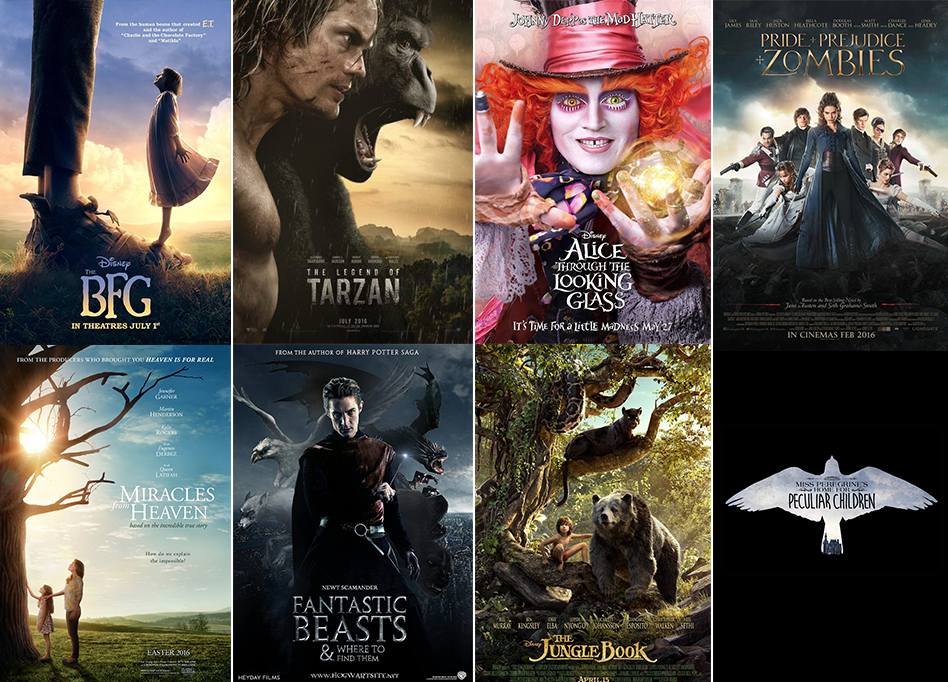Art in turbulent times serves as a powerful reflection of societal struggles and political unrest, capturing the essence of human experience amidst chaos. Throughout history, artists like Hieronymus Bosch and Max Beckmann have documented their environments in their works, revealing the complexities of existence during epochs of strife. Their creations not only mirror the socio-political landscapes but also act as prophetic insights, forewarning society of consequences to come. By examining the integration of art and society, we can unearth the emotional and psychological ramifications of conflict echoed through their canvases. In this light, art transcends mere aesthetic value, becoming a poignant commentary on the human condition in the face of adversity.
The exploration of creativity during chaotic periods unveils the intricate relationship between artistic expression and societal dilemmas. In the realm of political turmoil, artists often document their realities, allowing their works to resonate with the collective experience of crises. Whether interpreted as portents of despair or reflections of resilience, these artworks guide viewers through the complexities of their historical moments. Renowned figures like Bosch and Beckmann crafted pieces that not only illustrate the tumult of their times but also prompt discussions on morality and humanity’s darkest shadows. Through this lens, we see art evolving as not just a pursuit of beauty but as a critical voice amidst upheaval.
Art as Omen in Political Turmoil
The term “art as omen” encapsulates the essence of how artists respond to and reflect the societal upheavals and crises of their times. In Joseph Koerner’s book “Art in a State of Siege,” he delves into this concept through significant works like Hieronymus Bosch’s “The Garden of Earthly Delights” and Max Beckmann’s poignant self-portraits. These artists use their medium to forecast the emotional and psychological states of their viewers, creating a dialogue that transcends time. By addressing the pervasive themes of chaos, sin, and survival, their works serve as warnings and reflections of the tumultuous nature of human existence under political strife, implying that art can be both an expression and a forecast of societal challenges ahead.
Moreover, art’s capacity as an omen extends beyond mere representation. It challenges viewers to confront their realities and consider the implications of their social and political environments. For instance, Bosch’s fantastical yet troubling visions of paradise and damnation prompt introspection on moral choices during dire times. Similarly, Beckmann’s self-portrait provokes a contemplation of the role of the artist amidst societal decay, suggesting that art does not merely mirror conditions but can actively engage in the discourse about what it means to resist and critique the status quo.
The Intersection of Art and Society
Art and society share an intricate relationship, particularly during times of political unrest. As explored in Koerner’s analysis, these artworks do not exist in a vacuum; they emerge from a confluence of cultural, political, and personal experiences. This dynamic is vividly illustrated through the lens of Beckmann, whose works resonate with the uncertainties faced by Germany in the wake of World War I. Through his bold use of color and form, Beckmann articulates not just the despair of a nation but also the artist’s response to that chaos. His stance as a social commentator presents art as a vital tool for dissecting social realities and provoking conversations about the human condition during crises.
Similarly, Bosch’s iconography serves as a commentary on the era’s anxieties and moral quandaries. The complexity of his depictions in works like “The Garden of Earthly Delights” reveals societal fears about sin, order, and the nature of evil, functioning as both a compelling aesthetic experience and a vital social critique. In times where political unrest pervades daily life, art has the remarkable ability to reflect collective consciousness, capturing the societal pulse and inspiring both solace and action among viewers.
Max Beckmann: The Artist as Social Critic
Max Beckmann’s contributions to modern art are underscored by his role as a social critic during a time of upheaval. His self-portrait from 1927 not only showcases his technical mastery but also reflects a deep engagement with the socio-political tensions of post-WWI Germany. Beckmann’s direct gaze and powerful composition deliberate the notion of the artist as a mediator between chaos and order, suggesting that art can embody a form of moral authority. This perspective situates the artist at the heart of societal conversations, illuminating their pivotal role during turbulent moments.
In examining Beckmann’s work, it becomes evident that the portrayal of self is not solely a personal narrative but a broader commentary on the collective psyche of the time. His portrayal of himself in a tuxedo, juxtaposed against the backdrop of societal decay, offers insight into the duality of artist as both participant and observer. This complexity challenges spectators to rethink the relationship between individual identity and societal crisis and invites them to consider how art functions not only as a means of artistic expression but as a vehicle for resistance and reflection in times of conflict.
Hieronymus Bosch: Art Reflecting Anxiety
Hieronymus Bosch’s distinctive style and thematic preoccupations provide a profound commentary on the anxieties of his era. Known for his fantastical imagery and complex symbolism, Bosch’s works, particularly “The Garden of Earthly Delights,” illustrate the struggles between sin and virtue, indulgence and punishment. This triptych has fascinated and perplexed audiences for centuries, with its intricate details prompting diverse interpretations regarding the nature of morality and the human experience during societal turmoil.
Bosch’s art embodies the collective fears of living in a world rife with threats, whether from external forces or internal moral decay. The surreal quality of his vision serves as both an artistic expression and a psychological exploration of contemporary issues. By placing the viewer in a position to confront their own demons amidst his chaotic depictions, Bosch allows the audience to process their realities, thus cementing the role of art as a repository of social anxiety and a reflection of the ongoing struggles against oppressive forces.
The Role of Art in Times of Crisis
In exploring the function of art during times of political unrest, one finds that it serves as a critical platform for commentary and critique. Artists like Beckmann and Bosch offer reflections that resonate profoundly with the societal issues of their times, corresponding to the historical context of turmoil, fear, and uncertainty. Their works transcend mere visual appeal; they invite profound engagement, questioning social norms and political realities that contribute to a larger discourse on power and resistance.
Furthermore, art in crisis situations often embodies a dual narrative – it can serve both as a mirror reflecting societal ills and as a beacon of hope calling for change. This duality allows viewers to grapple with their realities while seeking solace or resolution within the artistic expressions. Thus, art operates not just as a passive reflection but as an active participant in the shaping of societal consciousness amidst chaos, providing insight into how societies navigate through and react to their challenges.
Art as a Weapon and Tool for Change
The idea of art functioning as a weapon reflects its potential to confront and challenge political ideologies. Artists, as evidenced by Koerner’s discussions of Beckmann and Bosch, often navigate perilous waters, using their work to critique authoritarianism and societal injustices. In this sense, art becomes an arrow aimed at the heart of oppression, encouraging a dialogue that can provoke thought and inspire action among viewers.
Moreover, the weaponization of art is not limited to its subject matter; it also encompasses the very form through which artists communicate their ideas. The styles, techniques, and mediums chosen can carry political weight, influencing perceptions and evoking emotional responses. For instance, Beckmann’s intense and unapologetic formal choices amplify the urgency of his message, while Bosch’s elaborate dreamscapes invite critical reflection on moral and existential dilemmas, thereby reinforcing art’s role as a catalyst for social change during turbulent times.
Viewer Interpretation: Engaging with Art and History
The viewer’s experience and interpretation of art are crucial components in the dialogue between the artwork and the observer. Koerner highlights how the significance of pieces by Bosch and Beckmann varies depending on the contextual lens through which individuals view them. This subjective layering of meaning illustrates the dynamic nature of art, particularly in times of political stress when societal anxieties manifest in personal interpretations, thus creating a multifaceted dialogue between the art and its audience.
In these engagements, viewers often project their own experiences, fears, and hopes onto the artwork, fostering a personal connection that transcends historical context. Bosch’s “The Garden of Earthly Delights” and Beckmann’s self-portrait come to life through these interpretations, revealing how art speaks not only to the time it was created but also to the timeless struggles that define human existence. This interplay serves as a vital reminder of art’s capacity to bridge the past and present, connecting individuals with shared experiences of political and existential unrest.
Resonance of Art Through the Ages
The resonance of artworks by figures like Beckmann and Bosch highlights the timeless nature of their messages and the universal themes of struggle and resilience they convey. As societies continue to experience political and social unrest, these historical works find renewed relevance, reflecting ongoing dialogues about morality, power, and human existence. Koerner’s emphasis on the continuity of artistic expression in turbulent times underscores the notion that the lessons derived from such works are not bound by their historical specificity but rather speak to ongoing human experiences.
In this enduring legacy, art is not merely a reflection of its era; it acts as a conscience for future generations. The exploration of political contexts in which artworks were produced, such as those by Bosch and Beckmann, invites contemporary audiences to engage in their histories and recognize the parallels with current societal issues. Thus, the importance of studying art from times of crisis becomes evident; it not only enriches our understanding of the past but also informs our actions in navigating the complexities of modern society.
Exploring Artistic Narratives of Conflict
The narratives embedded within artworks created during conflict reveal profound insights into the artist’s commentary on society. Both Bosch and Beckmann articulate the experiences of their times through their unique visual languages, employing symbolism and emotive imagery to communicate the chaos and moral dilemmas inherent in periods of political unrest. By doing so, these artists construct a narrative that invites viewers to reflect on their societal responsibilities and the consequences of inaction.
Through this lens, art acts not just as an aesthetic endeavor, but as a historical document illuminating the struggles of humanity during crises. This exploration of artistic narratives fosters a deeper appreciation for how artists translate their observations and critiques of the world around them into forms that resonate with both contemporary and future audiences. The potency of their messages endures, compelling us to confront uncomfortable truths while promoting reflection on our own societal conditions.
Frequently Asked Questions
How does art serve as an omen in turbulent times?
Art serves as an omen during turbulent times by reflecting societal anxieties and offering critical insights into the human condition. Artists like Max Beckmann and Hieronymus Bosch use their works to comment on political unrest and societal chaos, acting as visual prophecies of the struggles and moral dilemmas faced by society.
What can we learn from Max Beckmann’s ‘Self-Portrait in Tuxedo’ in the context of art during political unrest?
Max Beckmann’s ‘Self-Portrait in Tuxedo’ offers a profound insight into the artist’s role amidst political turmoil. Created in post-WWI Germany, this piece illustrates how artists sought to restore balance in society through their art, highlighting the tension between chaos and order during periods of unrest.
How does Hieronymus Bosch’s work relate to art in turbulent times?
Hieronymus Bosch’s works, especially ‘The Garden of Earthly Delights,’ resonate with themes of chaos and moral ambiguity, making them highly relevant in turbulent times. His art reflects societal fears and the perception of enemies during political unrest, allowing viewers to project their own crises onto the imagery.
What role does art play in reflecting societal unrest?
Art plays a crucial role in reflecting societal unrest by capturing the emotions and sentiments of a time. Works like Bosch’s and Beckmann’s articulate the struggles individuals face in turbulent periods, providing a visual commentary that often transcends time, reminding us of historical patterns and human resilience.
Why is it important to study art created during times of political upheaval?
Studying art created during political upheaval is vital as it reveals the deeper socio-political contexts of the time. Such artworks, including those by Hieronymus Bosch and Max Beckmann, encourage us to confront uncomfortable truths about society, power, and humanity’s response to crises.
Can art in turbulent times be a form of political commentary?
Yes, art in turbulent times can serve as a powerful form of political commentary. Artists use their works to critique prevailing societal norms, challenge authorities, and reflect the collective psyche during periods of unrest, as seen in the critical themes present in Bosch’s and Beckmann’s art.
What insights does Joseph Koerner offer about art in a state of siege?
Joseph Koerner discusses how art in a state of siege reflects a duality of danger and potential insight. His analysis of works by Bosch and Beckmann shows that, in times of crisis, art can mirror societal fears while simultaneously offering guidance on navigating those turbulent realities.
How does the concept of ‘the enemy’ appear in art from turbulent periods?
In art from turbulent periods, the concept of ‘the enemy’ is often portrayed ambiguously. Artists like Bosch deliberately create uncertainty about who the enemy is, reflecting the paranoia and societal divisions that arise during political unrest, thereby inviting viewers to question their own perceptions.
What themes emerge from examining art as an omen in turbulent times?
Themes that emerge when examining art as an omen in turbulent times include the struggle between chaos and order, moral ambiguity, and societal introspection. Artists often address existential questions and societal fears, offering a complex narrative that reflects the human condition amid crises.
How can contemporary society relate to historical art during political unrest?
Contemporary society can relate to historical art during political unrest by recognizing recurring themes in human behavior and conflict. Works from figures like Bosch and Beckmann remind us that the anxieties, fears, and moral dilemmas of the past resonate with present-day struggles, encouraging reflection and dialogue.
| Key Points | Details |
|---|---|
| Art as Omens | Joseph Koerner’s book explores how art reflects societal anxieties during turbulent times. He uses artworks as omens, particularly analyzing works by Bosch, Beckmann, and Kentridge. |
| Bosch’s Works | Bosch’s ‘The Garden of Earthly Delights’ demonstrates the ambiguity of good and evil and challenges viewers to assess their own experiences and interpretations in times of chaos. |
| Context of ‘State of Siege’ | The term ‘state of siege’ reflects political unrest where leaders may suspend civil rights, leading to increased tension and societal strife. |
| Max Beckmann’s Self-Portrait | Beckmann’s self-portrait from 1927 captures a pivotal moment in history when artists were seen as decision-makers amidst chaos, asserting the power of art in society. |
| The Role of Art in Unrest | Koerner emphasizes the importance of studying art from chaotic periods to understand its lasting significance and the narratives it weaves in the face of adversity. |
Summary
Art in turbulent times reflects the society’s fears, uncertainties, and hopes. Joseph Koerner’s examination of artworks by Bosch and Beckmann reveals how these artists interpreted and responded to political unrest, serving as guides for coping in oppressive environments. Understanding art within this context allows us to appreciate its power as a mirror of human conditions, illustrating both societal conflicts and the resilience of the artistic spirit.



